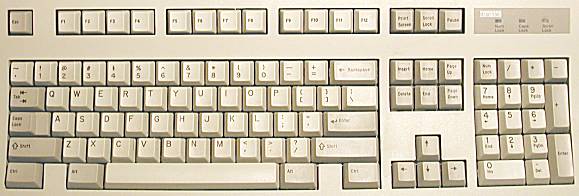One of the most commonly quoted performance statistics for CD-ROM drives is access time. As with most commonly-used performance metric, it is abused at least as much as it is used properly. Curiously, access time is used extensively in quoting the specs of CD-ROM drives, but is virtually never mentioned with respect to hard disks. With hard drives it is much more common to see quotes of the other metrics that are combined to make up access time. (This despite how similarly the devices access data…).
Access time is meant to represent the amount of time it takes from the start of a random read operation until the data starts to be read from the disk. It is a composite metric, really being composed of the following other metrics:
- Speed Change Time: For CLV drives, the time for the spindle motor to change to the correct speed.
- Seek Time: The time for the drive to move the heads to the right location on the disk.
- Latency: The amount of time for the disk to turn so that the right information spins under the read head.
Although access time is made up of the time for these separate operations, this doesn’t mean that you can simply add these other measurements together to get access time. The relationship is more complex than this because some of these items can happen in parallel. For example, there is no reason that the speed of the spindle motor couldn’t be varied at the same time that the heads are moved (and in fact this is done).
The access time of CD-ROM drives in general depends on the rated “X” speed of the drive, although this can and does vary widely from drive to drive. The oldest 1X drives generally had truly abysmal access times, often exceeding 300 ms; as drives have become faster and faster, access times have dropped, and now are below 100 ms on the top-end drives.
Note that while faster “X” rated drives have lower access times, this is due to improvements that reduce the three metrics listed above that contribute to access time. Some of it (latency for example) is reduced when you spin the disk at 8X instead of 1X. On the other hand, seek time improvement is independent of the spin speed of the disk, which is why some 8X drives will have much better access time performance than other 8X drives, for example.
Even the fastest CD-ROM drives are significantly slower than even the slowest hard disks; access time on a high-end CD-ROM is still going to be four or five times higher than that of a high-end disk drive. This is just the nature of the device; CD-ROM drives are based on technology originally developed for playing audio CDs, where random seek performance is very unimportant. CDs do not have cylinders like a hard disk platter, but rather a long continuous spiral of bits, which makes finding specific pieces of data much more difficult.
Even though access time is important in some ways, its importance is generally vastly overstated by the people that sell CD-ROM drives. Random access performance is one component of overall CD-ROM performance, and how essential it is depends on what you are doing with your drive. However even if high random access performance is important, you must bear in mind that there are far fewer random reads done, in general, to a CD than to a hard disk.
Another point is that manufacturers are not always consistent in how they define their averages. Some companies may use different testing methods, and some may even exaggerate in order to make their drives look much better than they actually are. A small difference in quoted access time is not usually going to make any noticeable real-world difference. For most purposes, a drive with a 100 ms access time is going to behave the same as one with a 110 ms access time. It’s usually better at that point to differentiate them based on other performance characteristics or features (or price).
| The PC Guide Site Version: 2.2.0 – Version Date: April 17, 2001 © Copyright 1997-2004 Charles M. Kozierok. All Rights Reserved. |
This is an archive of Charles M. Kozierok’s PCGuide (pcguide.com) which disappeared from the internet in 2018. We wanted to preserve Charles M. Kozierok’s knowledge about computers and are permanently hosting a selection of important pages from PCGuide.

